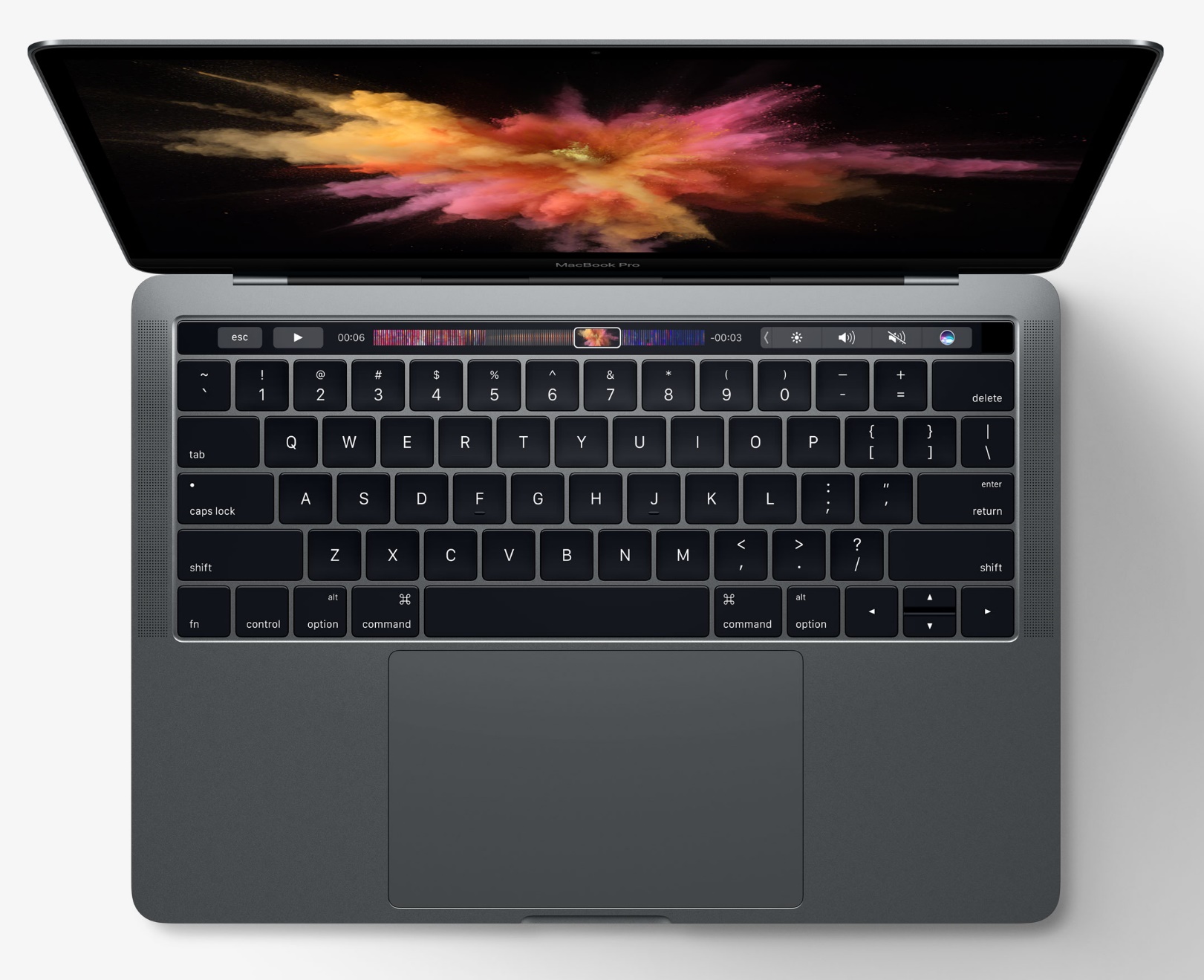New MacBook Pro: how to stretch those 10 hours of battery life to fit your workflow

Whether you go for a Touch Bar-endowed 15 inch MacBook Pro, or an entry-level 13 inch MacBook Pro with a more traditional row of function keys, the “Pro” in MacBook Pro means that your brand new shiny laptop will have to be able to perform a lot better than any cheaper alternative. This also means that battery life needs to be a lot better to fit your kind of workflow, at least when working untethered, that is.
The base 13 inch MacBook Pro model comes with a 54.5 watt lithium-polymer battery capable of charging through either one of the two available USB Type-C ports, and if you go for the 15 inch model, you will have the choice of four ports supporting 61 watts input. This also means faster charging on the go, which goes without saying, since USB Type-C ports are capable of withstanding up to 100 watts of throughput.
One odd difference between the Touch Bar version and the non-Touch Bar MacBook Pro is that the battery in the Touch Bar model is slightly less capable, at 49.2 watts, which might means a few percentage points higher than the Touch Bar version, although the difference may be irrelevant at benchmark time.
When it comes to saving battery life, much of the same old rules apply, and a few new ones designed to stretch the battery life further, even on a laptop with a little extra screen real estate to drive.
Update your OS
While it might seem a redundancy, making sure that you received the latest version of macOS Sierra is important. Many battery-saving functionalities are driven by the operating system, and keeping your software up to date means to enable your operating system to manage the battery on your MacBook Pro more efficiently.
Energy saving preferences
If you haven’t already, a quick trip to Apple > System Preferences will give you access to an Energy Saver button, which enables you to manage how long the display stays on when the MacBook is left temporarily unattended.
Dim your display
If you own a 13 inch MacBook Pro sans Touch Bar, pressing the F1 key will allow you to dim your MacBook’s screen to save power while in use. The great thing about a Retina display is that it’s so sharp that the picture is still clear even when dimmed. The new MacBook Pro’s screen is also the brightest yet, radiating up to a blinding 500 nits, with P3 wide color gamut, at a resolution of 2560 by 1600 pixels on the 13 inch version, and 2880 by 1800 pixels on the 15 inch model. That much brightness is great when plugged in, but when working on battery power, lowering the brightness makes a considerable difference.
This might be a little excessive, but considering that the MacBook Pro does not have the same requirements of an iPad, chances are there will be times when neither the WiFi, nor Bluetooth need to be on. Turning both off can be done by clicking on AirPort in the menu bar, or through System Preferences.
Sound
The sound system on the new MacBook Pro is great, but it does require a lot of power, especially when lots of notifications are coming in and making your MacBook chime, pop, tap and whistle through the day. Muting the sound is one way to go about it, but a less extreme measure would be to plug in headphones, or use external speakers if you really need to listen to music, without using the MacBook Pro’s built-in speakers.
External power accessories
Nothing draws power like a big external hard drive, or another device tethered into your MacBook. This is probably one of the reasons why the 13 inch version of the MacBook Pro comes with two USB Type-C ports instead of four like its 15 inch version. Keeping the number of wired peripherals down to one, or even none, will help extend the daily life of your battery.
Keep GPU usage low
The 13 inch MacBook graphic capabilities rely on an Intel Iris Graphics 540/550 GPU, while the 15 inch version is capable of switching between the integrated Intel graphic chipset, to AMD’s Polaris GPU for higher performance in graphic programs, 3D games, and for video editing. This is great news for gamers who are looking for an alternative to Windows 10 PCs, especially since Apple laptops have been traditionally geared towards productivity, rather than 3D performance. This also means that there is hope for VR support.
With that said higher graphic capabilities come at the cost of battery power, and the harder you play, the shorter the battery lasts. When using your MacBook Pro on battery power, avoiding 3D graphics apps and games will considerably improve how long you can go before the battery runs out.
Don’t worry about the Touch Bar
It has been said that due to the extra processing and power required by the Touch Bar on the new MacBook Pro, the battery life may suffer under particularly graphically intensive sessions.
The Touch Bar on the MacBook Pro is built using OLED technology, which means that only the pixels that are not black will draw power. This is an extremely efficient way to display information on a screen from a battery usage point of view. Furthermore, most applications that use the Touch Bar are designed to generate darker UI elements, to conserve power, in much of the same way as the iPhone and the Apple Watch do.
Ready to shop?
If you are looking for the perfect MacBook, PortableOne has you covered with a great selection of Apple MacBooks, as well as the newly unveiled 13 inch and 15 inch MacBook Pro with TouchBar.